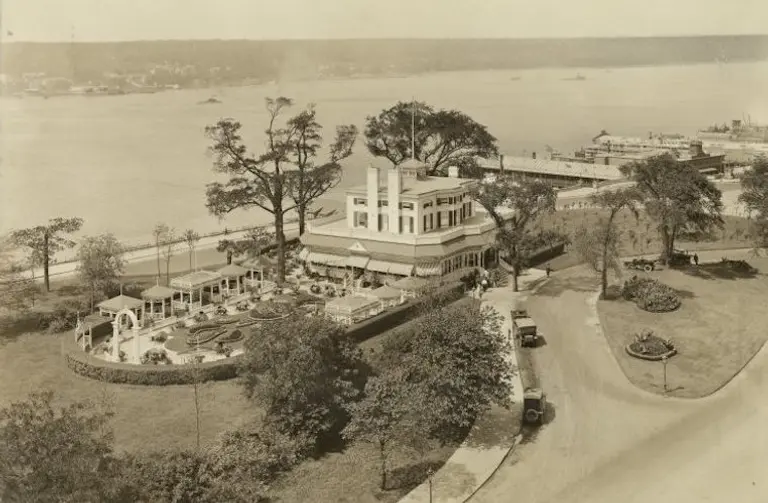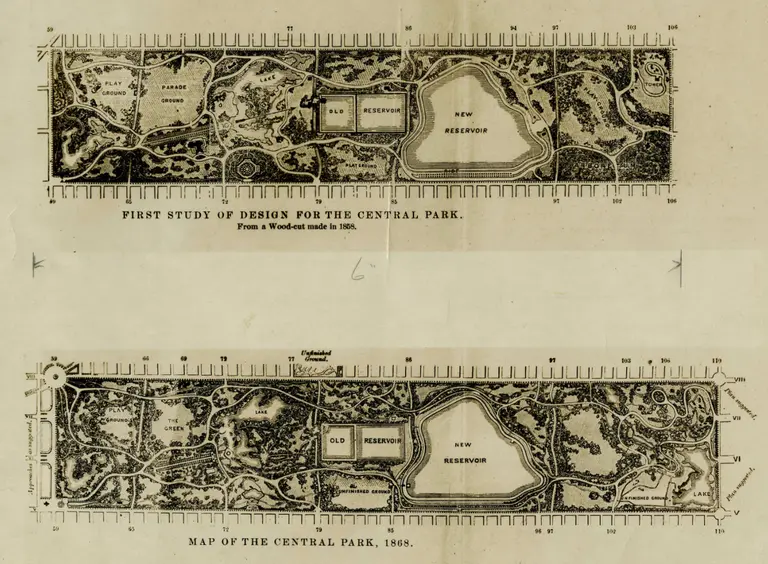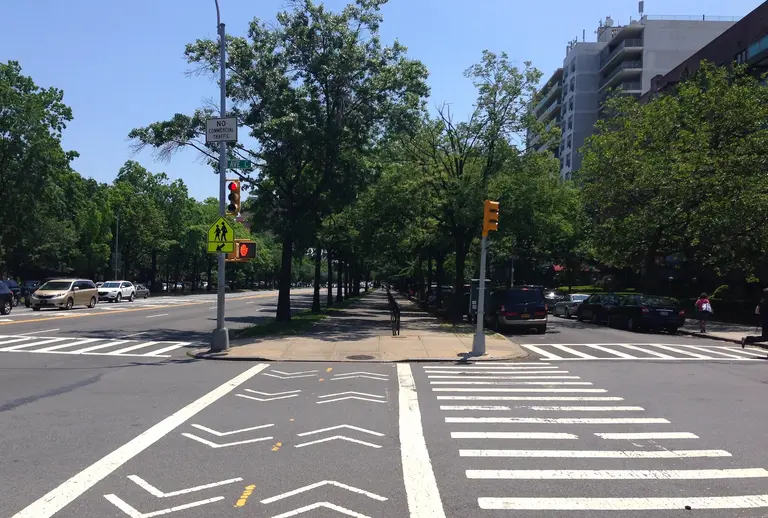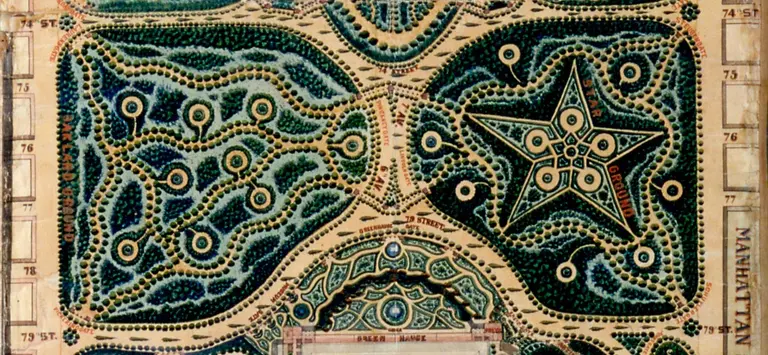NYC celebrates Frederick Law Olmsted’s bicentennial birthday with a month of parks programs
See more here

Irma and Paul Milstein Division of United States History, Local History and Genealogy, The New York Public Library. (1887 – 1964). Parks – Riverside Park – West 122nd Street; Via NYPL Digital Collections

Early designs for Central Park. Image courtesy of the National Park Service, Frederick Law Olmsted National Historic Site.

Photo by Kai Brinker on Flickr

John Rink’s rejected design proposal for Central Park, via NY Historical Society